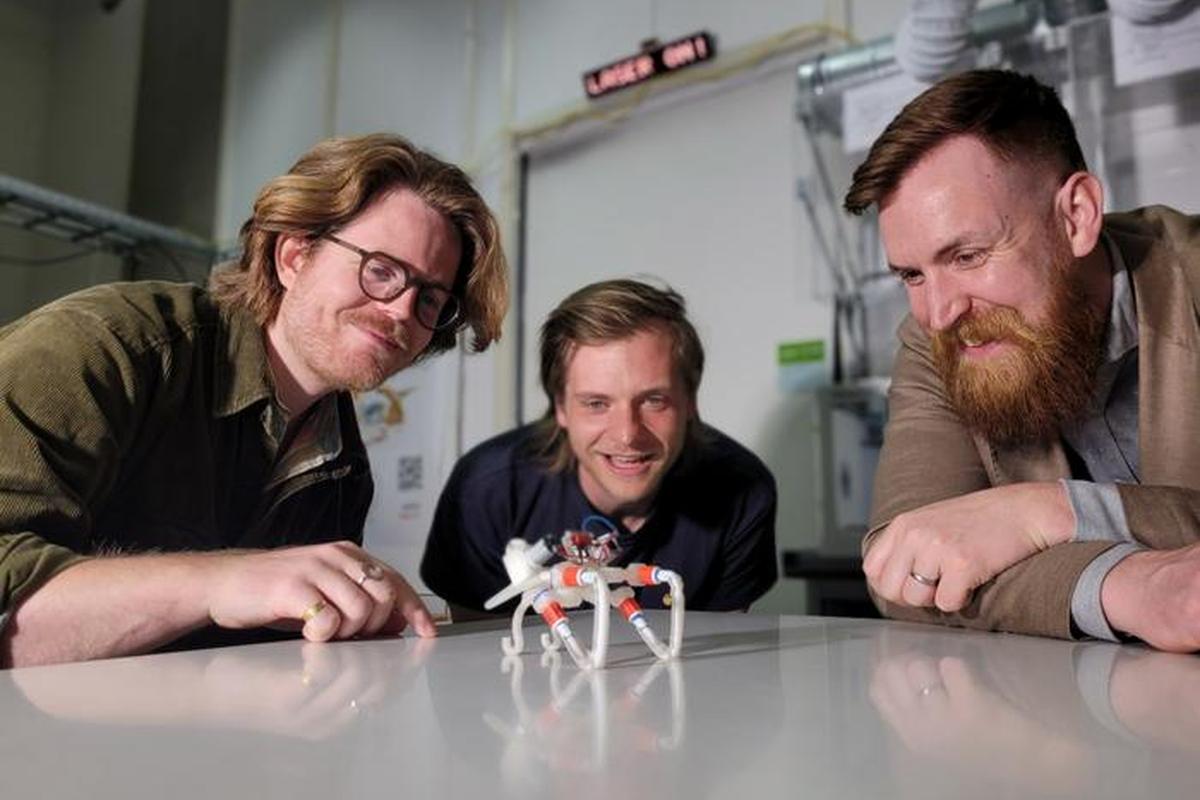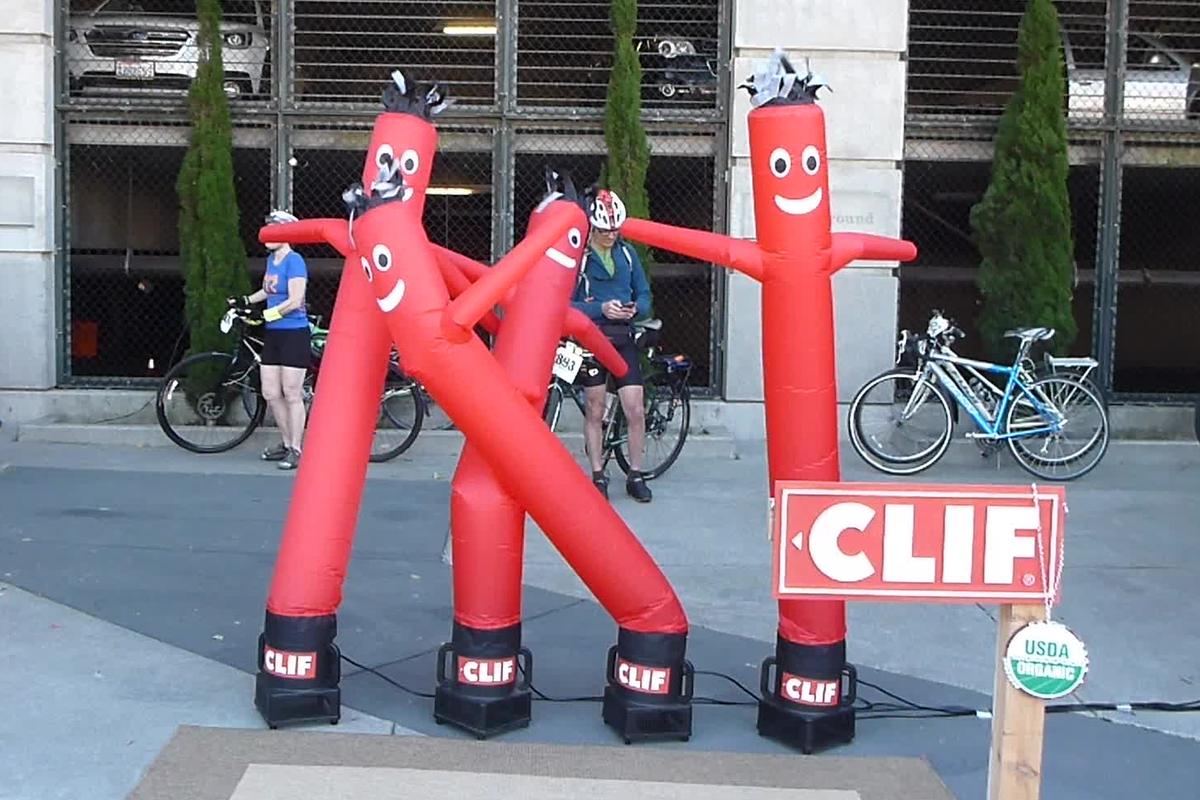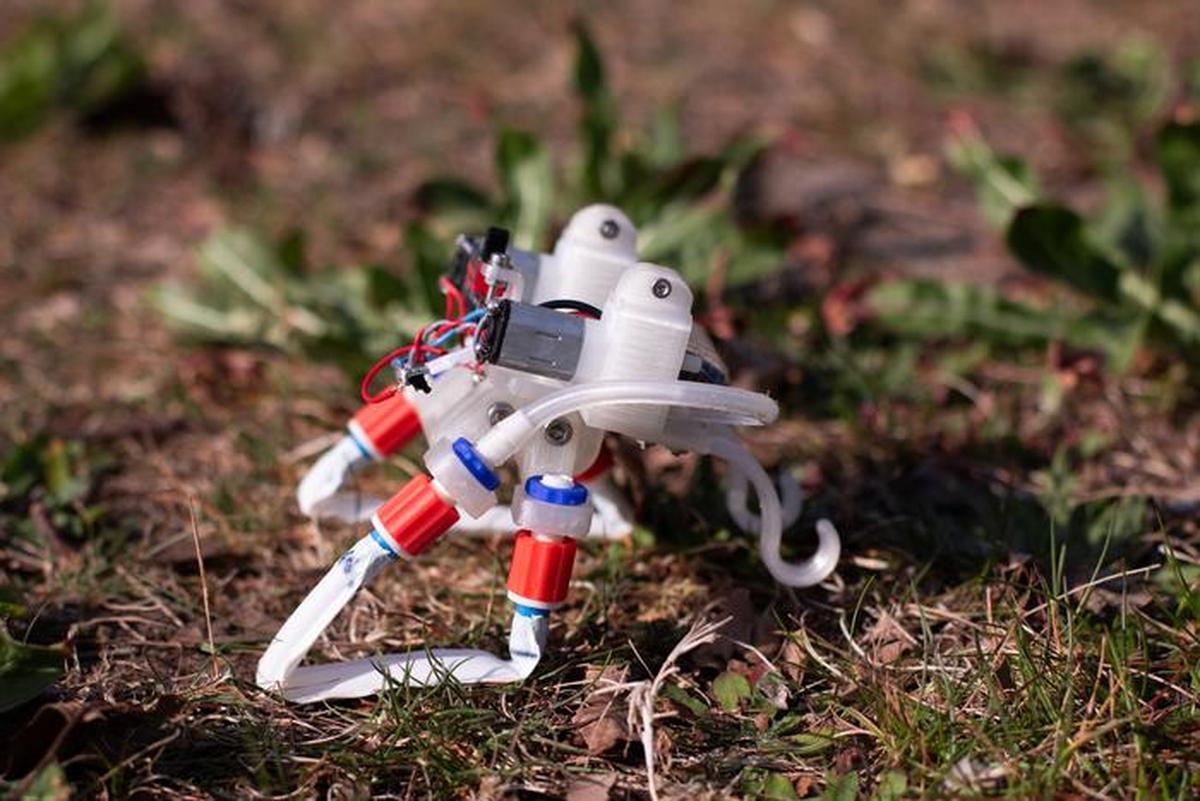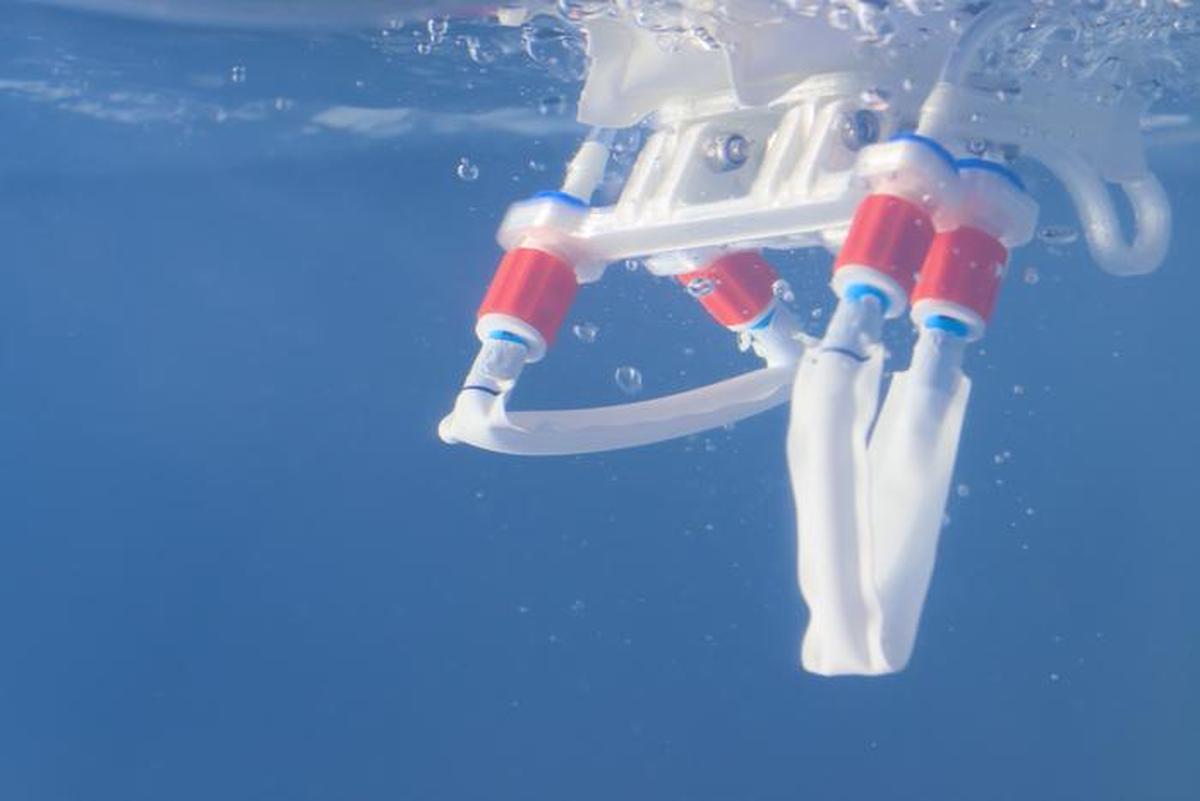Amsterdam, Netherlands —(Map)
Scientists in the Netherlands have created a soft-bodied robot that’s powered by air. The robot doesn’t have a computer or a “brain”, but even so, it’s able to walk and swim on its own.
When you think of a robot, you might picture something with a lot of sensors, and stiff metal arms controlled by a computer. But scientists at the AMOLF institute in the Netherlands have come up with a robot that has no brain and no sensors. And yet this robot can “walk” by itself. And if it’s dropped into water, it swims.

(Source: AMOLF/Alberto Comoretto .)
How is this possible? The team behind the robot says the secret is in the science of how air moves.
If you’ve ever seen a “tube dancer” flopping around, then you’ve seen the science that makes this robot work. Tube dancers are tall thin tubes of cloth that air is pumped through. High pressure from the pumped air fills the tube, making it stand up.

(Source: Martin Criminale [CC BY-SA 2.0], via Wikimedia Commons.)
When the tube stands all the way up, the air flows through faster, making the pressure drop. This drop in pressure forms a “kink” or a bend in the tube, causing the tube to fall partway over. The kink makes the pumped air move more slowly, raising the pressure again. The pumped air pushes the kink up until the dancer stands up once more.
Air pressure moving a kink along a tube is exactly what drives the robot. The magic happens because there are several tubes hooked up to the same air supply. When the air starts to flow, the tubes move in different ways. But very quickly, all of these “legs” start to move in exactly the same way, making the robot walk. The robot’s speed is controlled by the air pressure.

(Source: AMOLF/Alberto Comoretto .)
The researchers built two robots. The first robot had four legs and the air was pumped to it through a hose. Later, the team developed a lighter, two-legged robot that could carry its own battery-powered pump.
There are several remarkable things about the robot. The first is its speed. The robot can cover a distance equal to thirty of its body lengths in a second. That would be like the world’s fastest man, Usain Bolt, running the 100 meter race in 1.71 seconds. (Bolt’s record, which has never been broken, is 9.58 seconds.).

(Source: AMOLF/Alberto Comoretto .)
The robot also adjusts automatically to its conditions. It can go over uneven ground. If it bumps into a wall, it automatically turns. Perhaps most surprising is the fact that if the robot is dropped into water, it begins moving in a new way that allows it to swim.
Because there’s no brain, the scientists say their new invention is really just a machine. But it’s a machine that can automatically do several complicated tasks that would normally require lots of very difficult programming for a robot.

(Source: AMOLF/Alberto Comoretto .)
So far, almost all of the robot’s skills are things that it just does automatically. The researchers say that in the future they hope to develop new ways to control the robot and perhaps give it more skills.
Did You Know…?
The researchers also say they want to try to apply some of what they’ve learned to create other useful simple machines that work automatically. One project they are working on is an artificial heart.
If you’d like to see the robot in action, you can see how it works in this YouTube video.
😕
This map has not been loaded because of your cookie choices. To view the content, you can accept 'Non-necessary' cookies.
